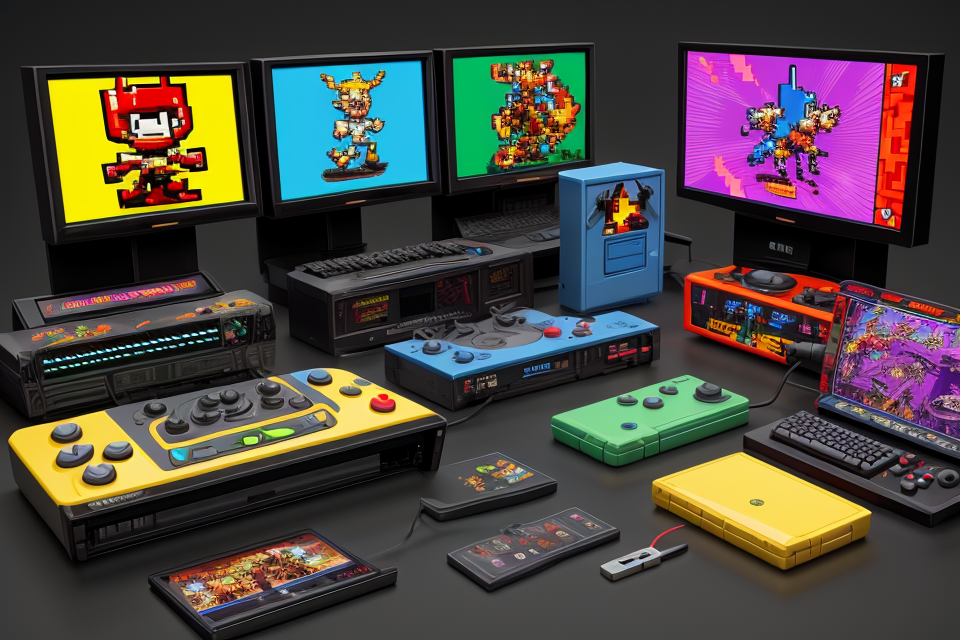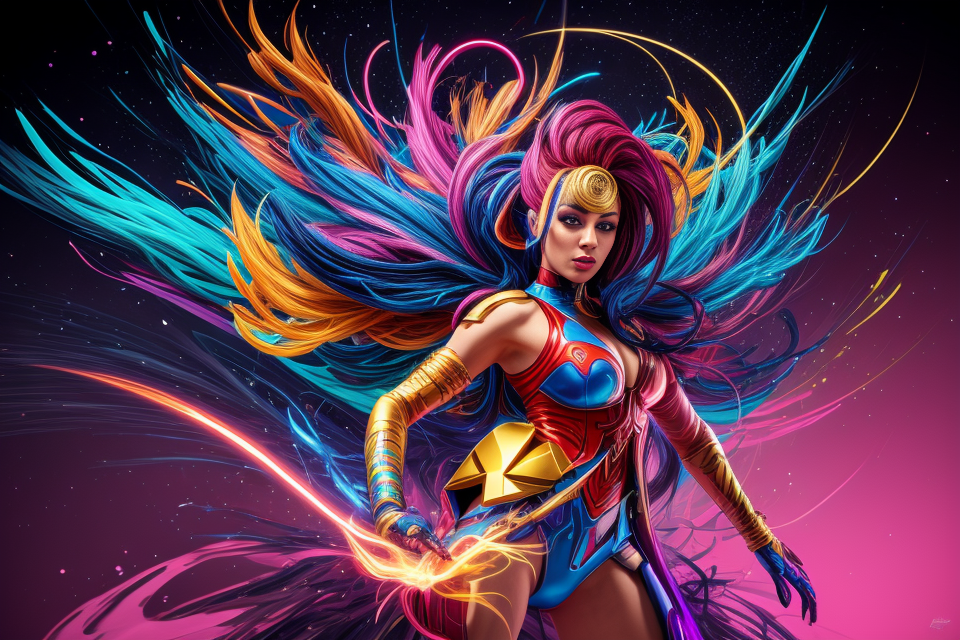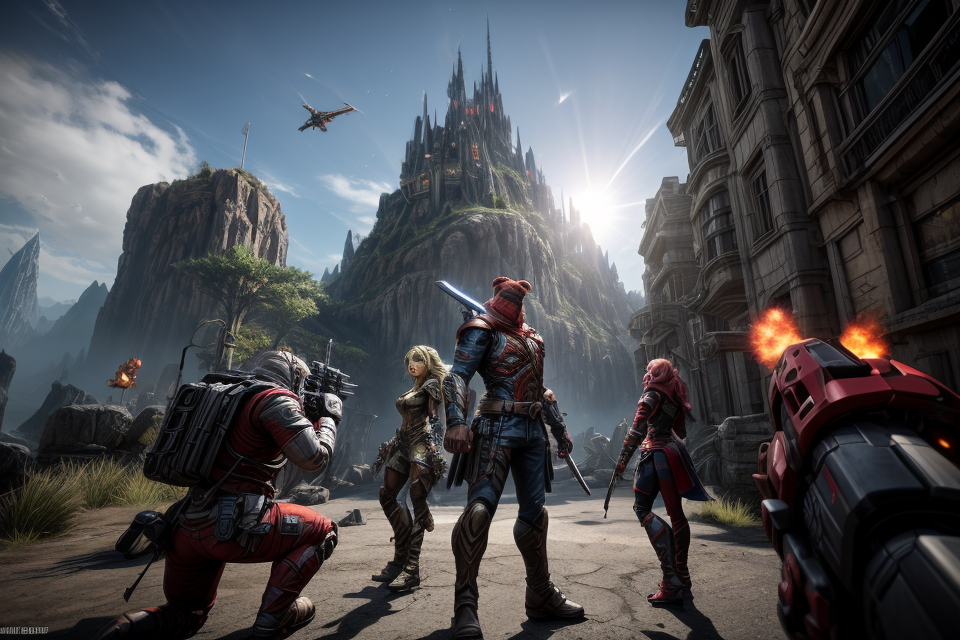Have you ever stopped to consider what happens to the characters in video games after you turn off the console? Do they simply disappear into the ether, never to be seen or heard from again? In this fascinating talk, we’ll explore the evolution of video game characters, from their humble beginnings as simple pixels to their current state of photorealism. We’ll delve into the world of gaming and discover how the advancements in technology have allowed for more complex and nuanced storytelling, making the characters in our games feel more real than ever before. Join us as we uncover the secrets behind the evolution of video game characters and the impact it has had on the gaming industry.
The Early Days: Pixelated Characters
The Rise of 8-Bit and 16-Bit Graphics
As video games progressed from simple arcade games to more complex console and computer games, the graphics capabilities of gaming systems also improved. The rise of 8-bit and 16-bit graphics allowed for more detailed and visually appealing characters.
Limited graphics capabilities of early gaming consoles and computers
The limited graphics capabilities of early gaming consoles and computers, such as the Nintendo Entertainment System (NES) and the Sega Genesis, restricted the visual appearance of video game characters. Developers had to work within these limitations to create visually appealing characters.
Use of pixel art to create simple yet recognizable characters
To overcome these limitations, developers turned to pixel art, a digital art form that uses individual pixels to create images. Pixel art allowed for the creation of simple yet recognizable characters that could be displayed on the limited hardware of the time.
Examples: Super Mario Bros., The Legend of Zelda, Final Fantasy
Some of the most iconic video game characters of all time were created during this era, including Super Mario Bros., Link from The Legend of Zelda, and the characters from the Final Fantasy series. These characters were created using pixel art and became instantly recognizable to gamers around the world.
Despite the limitations of the technology, the characters created during this era have become beloved by gamers and continue to be celebrated today. The use of pixel art to create simple yet recognizable characters set the stage for the evolution of video game characters in the years to come.
The Impact of Pixelated Characters on Gaming Culture
- The iconic status of early video game characters, such as Mario and Sonic, who have become cultural icons and symbols of the gaming industry.
- The influence of these characters on future game design and aesthetics, as developers sought to create memorable and recognizable characters that would appeal to players.
- The cultural significance of these characters in gaming history, as they helped to establish the gaming industry as a legitimate form of entertainment and paved the way for the development of more complex and sophisticated games.
The Transition to 3D Graphics
The Evolution of 3D Graphics in Gaming
Advances in computer graphics and rendering technology
- The early 1970s saw the emergence of 3D computer graphics with the Sketchpad program, which allowed users to create and manipulate 3D wireframe models.
- In the 1980s, advancements in computer graphics hardware led to the development of more sophisticated 3D rendering techniques, such as ray tracing and hidden surface removal.
- In the 1990s, game engines like id Software’s Doom and Quake used rasterized 3D graphics to create immersive gameplay experiences.
Emergence of 3D game engines and polygonal models
- The 1990s also saw the rise of 3D game engines like Unreal Engine and Epic Games’ Unreal Tournament, which used polygonal models to create more detailed and realistic environments.
- The introduction of the PlayStation console in 1994 popularized 3D gaming and pushed developers to create more advanced 3D graphics for console games.
- In the late 1990s and early 2000s, game engines like the Quake engine and the Half-Life engine continued to improve, with the latter using advanced lighting and particle effects to create more immersive environments.
Increasing realism and complexity of game worlds
- The 2000s saw a significant increase in the realism and complexity of game worlds, with titles like Grand Theft Auto III, Shadow of the Colossus, and Gears of War showcasing advanced 3D graphics and animation.
- The rise of next-generation consoles like the Xbox 360 and PlayStation 3 in the late 2000s further pushed the boundaries of 3D graphics in gaming, with games like Uncharted 2: Among Thieves and Mass Effect 2 featuring highly detailed environments and advanced character models.
- The continued advancements in computer graphics and rendering technology, as well as the increasing power of gaming hardware, have led to the current state of 3D graphics in gaming, where photorealistic characters and environments are becoming increasingly common.
The Challenges of Adapting 2D Characters to 3D Environments
- Rebuilding classic characters in a new visual format: With the shift to 3D graphics, game developers had to redesign 2D characters to fit within a three-dimensional world. This required rethinking the way characters moved, interacted with their environment, and with other characters. The process of translating 2D characters into 3D ones was not always seamless, and some designs were criticized for appearing awkward or out of place in their new surroundings.
- Balancing the need for nostalgia with the desire for innovation: As game developers adapted 2D characters to 3D environments, they had to balance the need to stay true to the original designs with the desire to introduce new features and gameplay mechanics. This could be challenging, as fans of the original games often had strong emotional connections to the characters and were resistant to change. At the same time, game developers needed to introduce new elements to keep the games feeling fresh and engaging.
- Examples: Super Mario 64, The Legend of Zelda: Ocarina of Time: Two classic games that exemplify the challenges of adapting 2D characters to 3D environments are Super Mario 64 and The Legend of Zelda: Ocarina of Time. In Super Mario 64, the game’s designers had to translate the classic 2D characters and environments into a 3D world, resulting in a game that felt both familiar and new. Similarly, The Legend of Zelda: Ocarina of Time introduced a 3D world to the franchise, requiring players to learn new controls and gameplay mechanics while still recognizing the characters and settings from previous games. Both games were successful in part because they managed to balance nostalgia with innovation, making them appealing to both longtime fans and new players alike.
The Age of Photorealism
The Pursuit of Realism in Video Games
Advances in Rendering Technology and Hardware Power
As technology advanced, video game developers were able to push the boundaries of what was possible in terms of rendering realistic characters and environments. The increased processing power of modern gaming hardware, such as the PlayStation 4 and Xbox One, has allowed for more detailed and intricate graphics than ever before. This has enabled developers to create more realistic textures, lighting, and shadows, which in turn has led to a more immersive gaming experience for players.
Increasing Complexity and Fidelity of Game Environments and Characters
Along with advances in rendering technology, game developers have also been pushing the limits of what can be achieved in terms of character design and environmental detail. Characters are now being designed with a focus on realism, with attention paid to details such as facial expressions, body language, and clothing. Similarly, game environments are being designed with a greater emphasis on realism, with attention paid to details such as weather effects, lighting, and foliage.
The Impact of Realism on Immersion and Player Engagement
The pursuit of realism in video games has had a significant impact on player immersion and engagement. As characters and environments become more realistic, players are able to become more fully immersed in the game world. This increased level of immersion can lead to a more engaging and satisfying gaming experience, as players are able to become more fully invested in the story and characters of the game. Additionally, the increased realism of characters and environments can also lead to a greater sense of responsibility and attachment to in-game characters, leading to a more emotionally impactful gaming experience.
The Pros and Cons of Photorealistic Characters
- Realistic graphics can enhance the believability and emotional impact of characters
- Increased immersion and empathy due to lifelike appearances
- Greater emotional resonance with players as characters’ expressions and movements become more human-like
- However, a focus on realism can sacrifice character personality and individuality
- Characters may blend together, lacking distinctive traits or personalities
- Potential for a loss of creativity and innovation in character design
- Balancing realism with stylization for a unique and memorable gaming experience
- Finding the right balance between photorealism and artistic style to create compelling, distinctive characters
- Acknowledging the importance of character personality and individuality in the gaming experience
- Embracing the strengths of both realism and stylization to create a rich, engaging world for players to explore.
The Future of Video Game Characters
Emerging Trends in Game Design
Integration of procedural generation and AI to create dynamic characters
One of the most exciting trends in game design is the integration of procedural generation and artificial intelligence (AI) to create dynamic characters. Procedural generation involves using algorithms to create content, such as levels or characters, in real-time. This technology allows for an almost limitless number of possibilities in character design, as well as the ability to create unique experiences for each player. AI, on the other hand, can be used to create characters that learn and adapt to the player’s behavior, making for a more immersive and personalized gaming experience. By combining these two technologies, game designers can create characters that are not only visually stunning but also adaptable and responsive to the player’s actions.
The rise of virtual reality and its impact on character design
Another trend that is changing the face of video game characters is the rise of virtual reality (VR). VR technology has come a long way in recent years, and it is now possible to create fully immersive gaming experiences that transport players to new worlds. This technology has a significant impact on character design, as designers must now consider how their characters will look and behave in a 3D environment. This means that characters must not only look realistic but also move and interact with the player in a way that feels natural. VR technology also allows for new forms of character customization, as players can now see their characters from all angles and make adjustments accordingly.
Increasing focus on accessibility and inclusivity in game design
Finally, there is a growing focus on accessibility and inclusivity in game design. This means that game designers must consider the needs of players with disabilities and ensure that their characters and gameplay mechanics are accessible to all. This can involve things like providing subtitles for dialogue, offering customizable controls, and designing characters that are diverse and representative of all players. By focusing on accessibility and inclusivity, game designers can create characters that are not only visually stunning but also inclusive and welcoming to all players.
The Future of Classic Characters
- Evolution of classic characters to adapt to new gameplay styles and platforms
- As the video game industry continues to evolve, classic characters must adapt to new gameplay styles and platforms in order to remain relevant to modern audiences. This may involve updating their appearance, abilities, and storylines to fit the needs of new games and platforms.
- For example, the character of Mario has evolved significantly since his first appearance in the 1980s, with new abilities and gameplay mechanics being added to his repertoire as technology and player expectations have changed.
- Potential for reimagining classic characters in new settings or genres
- Another way that classic characters can continue to evolve is through reimagining them in new settings or genres. This can involve updating their appearance and abilities to fit the new setting, or creating entirely new backstories and motivations for the character.
- For example, the character of Link from The Legend of Zelda has been reimagined in various games set in different time periods and with different storylines, allowing players to experience the character in new and exciting ways.
- The importance of preserving the legacy of iconic video game characters
- While it is important for classic characters to evolve and adapt to new contexts, it is also important to preserve their legacy and ensure that they remain true to their original vision. This can involve updating them in subtle ways that honor their history while also making them relevant to modern audiences.
- For example, the character of Sonic the Hedgehog has been updated over the years with new abilities and gameplay mechanics, but his core speed and agility remain unchanged, ensuring that he remains true to his original vision while still being relevant to modern players.
FAQs
1. What is the history of video game characters?
Video game characters have come a long way since the early days of simple pixel art. The evolution of video game characters has been driven by advancements in technology, increasing demands from players, and the creativity of game developers. As games have become more sophisticated, so too have the characters that inhabit them. Today’s video game characters are often highly detailed, with realistic graphics and intricate backstories.
2. How have video game characters changed over time?
The changes in video game characters have been significant over the years. Early characters were often simple, with basic animations and little personality. As games became more complex, characters began to take on more defined roles and personalities. Today’s video game characters are often highly detailed, with intricate designs and advanced animation systems. They may also have complex backstories and relationships with other characters in the game world.
3. What is the role of technology in the evolution of video game characters?
Technology has played a significant role in the evolution of video game characters. Advances in hardware and software have allowed game developers to create increasingly realistic graphics and animations. This has enabled them to create more detailed and nuanced characters, with greater depth and complexity. In addition, technology has allowed for the creation of more advanced AI systems, which enable characters to behave in more realistic and believable ways.
4. How do game developers create realistic video game characters?
Game developers use a variety of techniques to create realistic video game characters. One of the most important is the use of advanced animation systems, which allow for highly detailed and nuanced movements. Game developers may also use motion capture technology to capture the movements and expressions of real actors, which can then be applied to virtual characters. In addition, game developers may use advanced materials and lighting systems to create realistic-looking textures and surfaces on characters.
5. What are some examples of iconic video game characters?
There are many iconic video game characters that have become beloved by players around the world. Some examples include Mario, Link, and Sonic from the world of Nintendo, as well as characters like Lara Croft and Kratos from the world of PlayStation. These characters have been around for decades and have undergone many changes over the years, but they remain recognizable and beloved by fans.



